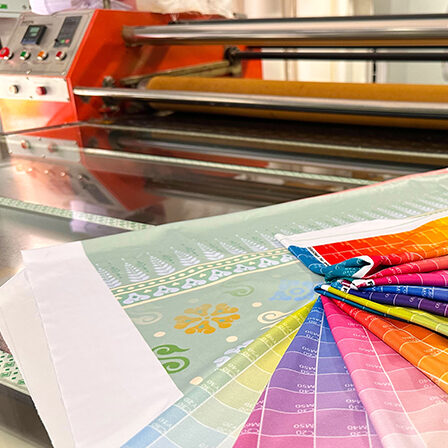Which Fabric Printing Technique Truly Fits Childrenswear?
When brands think about prints in children’s clothing, the conversation can’t stop at “which printing method looks best.” In childrenswear, comfort, safety, and practicality are inseparable from style. That’s why the real question is: which printing technique works best on which fabrics, and how does that align with children’s needs?
At MK Kids, we guide partners to choose printing solutions that match their fabric selections—because in kids’ fashion, fabric and printing technology must be considered as one system. Let’s dive into the most relevant combinations for childrenswear.
Digital Reactive Printing: The Natural Fiber Specialist
Reactive printing is a process where dyes form a chemical bond with natural fibers—cotton, bamboo, linen, or even silk. Unlike pigment printing, which coats the surface, reactive dyes penetrate deeply into the fiber.
For childrenswear, this is a huge advantage. The result is brilliant color that feels soft, breathable, and wash-resistant—qualities essential for garments in constant contact with sensitive skin. That’s why reactive digital printing is widely used for organic cotton T-shirts, bamboo sleepwear, and linen dresses.
It is not the cheapest option, but for premium kidswear and babywear, it’s often the best balance of safety, comfort, and lasting quality.
Sublimation Printing: Perfect for Polyester
Sublimation printing transforms dye into gas, embedding it directly into polyester fibers. The print becomes part of the fabric itself, meaning no cracking, peeling, or fading—even after endless washes and playground adventures.
This makes sublimation ideal for children’s swimwear, sportswear, and UV-protective apparel. It delivers stunning, vibrant colors with zero added weight or stiffness.
The limitation is clear: sublimation only works on polyester or high-polyester blends. For brands committed to natural fabrics, this technique is not an option. But for performance-driven kidswear, sublimation is unmatched.
Pigment Printing: Declining in Core Kidswear
Pigment printing is flexible and low-cost, and it works on many fabric types. But it bonds to the surface rather than into the fibers, which can create a stiffer hand feel and less durability. For babywear or soft loungewear, this is a clear drawback.
Where does it still work? In outerwear, hats, bags, or accessories—places where softness is not critical. It also remains a practical choice for low-cost mass-market garments. However, in higher-end childrenswear, pigment printing is steadily losing ground to reactive and sublimation methods.
Rotary Screen Printing: Still Relevant for High-Volume Basics
Rotary screen printing may seem old-fashioned in the age of digital, but it remains efficient for large-scale, repeating designs. Think stripes, dots, or cartoon patterns on thousands of cotton pajamas or uniforms.
Its advantages are speed and low cost at scale. The disadvantages: expensive setup, limited design complexity, and inflexibility when trends change quickly.
Today, many fast-fashion and price-sensitive childrenswear markets still rely heavily on rotary screen printing. In contrast, mid-to-high-end brands in Europe and North America are shifting to digital methods for greater design freedom and sustainability.
So, Which Works Best?
There is no single “winner”—the right choice depends on fabric and market positioning:
Cotton, Bamboo, Linen, Silk → Digital Reactive Printing for softness and child-safe comfort.
Polyester & Performance Fabrics → Sublimation Printing for durability and vibrancy.
Accessories & Outerwear → Pigment Printing, though less common in core children’s apparel.
Large-Volume Basics → Rotary Screen Printing, still relevant for simple high-volume orders.
In short: reactive printing and sublimation are the real growth drivers in childrenswear today, while pigment and rotary remain niche or cost-driven choices.
The MK Kids Approach
As experienced childrenswear manufacturers, MK Kids helps brands align fabric, print technology, and product category. A design that looks perfect on screen may fall short if the wrong print-fabric pairing is chosen. That’s why our ODM/OEM services emphasize not just production, but technical guidance.
Whether you’re developing bamboo swaddles with digital reactive printing, polyester swimwear with sublimation, or large-volume basics with rotary, MK Kids ensures every print is safe, durable, and market-ready.
Because in childrenswear, prints are more than decoration—they are a test of comfort, quality, and trust.
 +1 5618168645
+1 5618168645

 Admin
Admin




 No. 888 ZhuJiaWan Street, Gusu District, Suzhou City, Jiangsu Province, China
No. 888 ZhuJiaWan Street, Gusu District, Suzhou City, Jiangsu Province, China